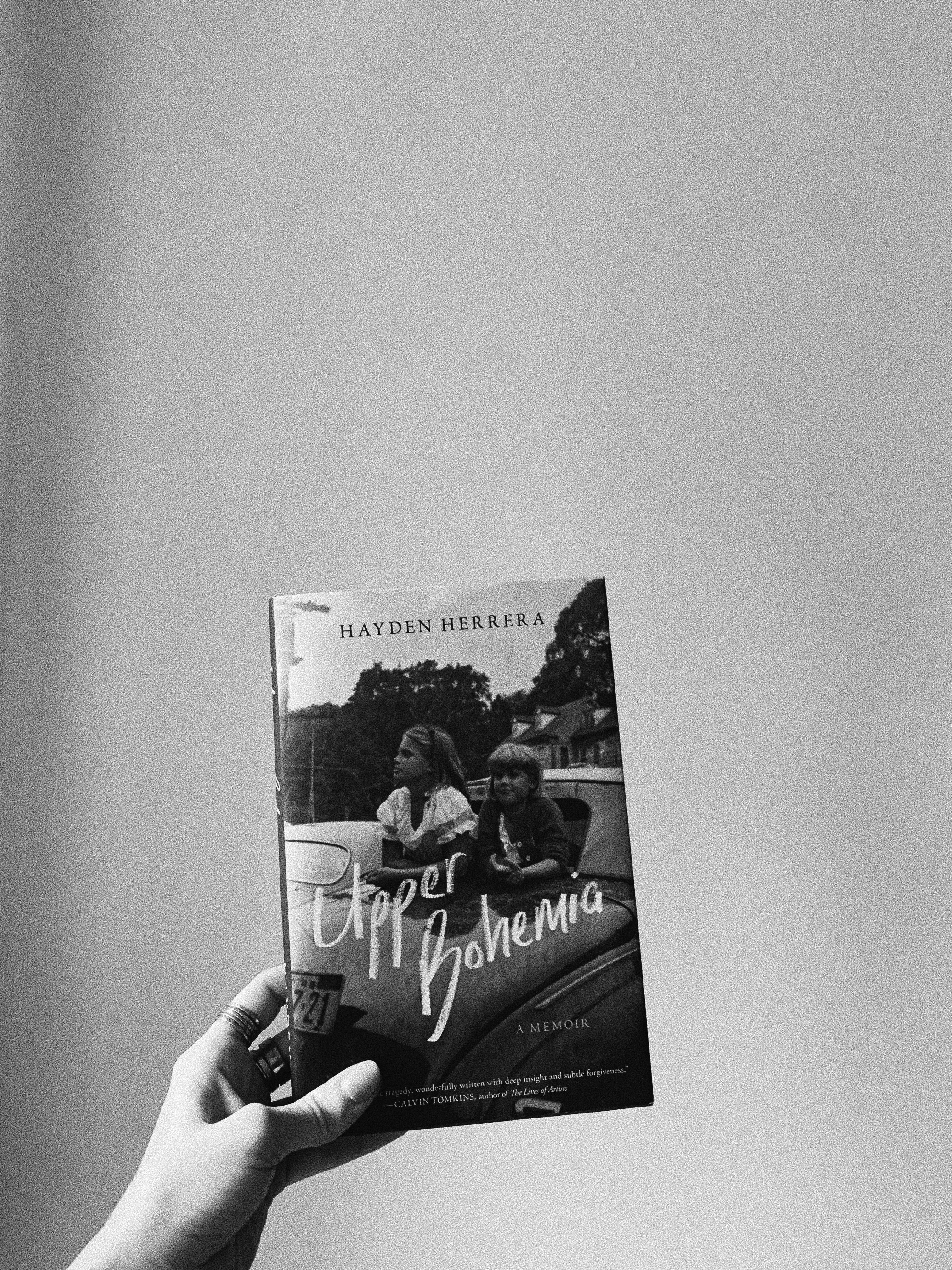Two years ago, I read Hayden Herrera’s biography of Frida Kahlo. I loved it, as I do most comprehensive biographies of artists in the mid-twentieth century, and I took two big themes away from it: 1. There is an art to physical suffering and it includes the committed honesty of the sufferer and 2. There is so much surrealism steeped into the culture of Mexico.
Though neither of these themes are close to the heart of Upper Bohemia, the same dreamlike stage and artistic agony found in the pages of Frida also inform this memoir. Written from the perspective of Herrera as a child, the reader is grabbed by the hand and lead through summers in Cape Cod and winters being the new kid at school, all under the supervision of two free-spirit parents whose wider social circle included many lions of the art world.
Upper Bohemia is written with a childlike precision and nonsensical coherence (“Having a balloon on my bedroom ceiling made me think I could live on the ceiling, too”). Herrera idolized her father and lived in the melancholic shade of her seemingly-bipolar mother. Both beautiful and charismatic, they both cast a shadow over their daughter by never quite living up to their full potential, as parents and as artists.
You can sense Herrera’s wonder with the world throughout the book, one that feels hopeful but insignificant as it grapples with the enormity of the world outside her family.
I must’ve been four years old when I was walking down the long, narrow hall at eighty-fifth street and I suddenly realized that other people had thoughts and feelings tossing around in their heads. This was a comfort. I had worried that I was the only one. Now I knew that everyone was like me, even Blair, even my mother. I looked at their heads and I knew their secret — they had ideas inside.
As she is shuttled between her mother and her father, and different relatives and step-parents, she finds refuge in herself and her thoughts. She was never in one place long enough to relax into the idea of herself as an individual exclusive from her sister Blair before she was picked up and moved to a different place – a house-turned-Artist Camp on a pond in Cape Cod, a railroad apartment that her mother shared with her lover on the Upper East Side, her grandmother’s pristine and etiquette-friendly house in Cambridge. Upper Bohemia suspends the knowledge of the world (one that might send an adult into a midlife tailspin) for the sake of a beautiful tableau of a childhood on the tangents of a bohemian universe.
Upper Bohemia did a great job balancing the micro and the macro. Details only a child could pick up on show up in tandem with overarching patterns:
Ellie used to trim our nails and save the little quarter moons that she cut off. “I’m keeping these,” she explained, “because when your mother comes, I can show them to her, and she will know I am taking good care of you.”
B- and C-list artists who brushed shoulders with the likes of Rivera, Guggenheim, and Gorky present themselves as signs of the times, markers of values. Herrera’s parents are imperfect people with imperfect friends whose names we’ve heard in art classes. But Herrera colors in my stale recollection of art history with their humanity; loud colors like divorces and children, quiet colors like laughter around a campfire and tickle fights.
Infinity stretches out forever in childhood. It feels as though the earth is alive because you are. Seasons are checkpoints of understanding the world in bigger ways as life ominously stretches out in front of you, never to end. You can feel infinity permeate every memory in this book.
After my mother drove away, promising to be back next summer, I lay on my back under a huge pine tree below the front steps of the Big House. The pine-needle-covered earth was like a mattress. I wanted my mind to be just as soft, but the inside of my skull felt chunky and hard, full of sharp corners. I did that crunch down thing on my heart, and instead of missing my mother, I studied the patches of the blue sky in the spaces between the pine tree’s branches. High up there were pine cones, black against the sky. If they moved, I knew they were birds. When the wind picked up, the blue pieces of sky changed shape. Embraced by the pine’s limbs, these blue shapes seemed both close and far, so near that I could have climbed the tree and put my arm through them, and so far away that they were part of an emptiness that went on forever.
It makes sense that Herrera would grow up to study the pillars of the art world after growing up parallel to it, now stepping in and out of the lives of the Kahlos and the Matisses, building out their universes for the common man to enter into via page. But to distill the spirit of one’s own childhood into a dazzling portrait so intimate that the reader remembers what it’s like to think as a child — to worry or fear or delight as a child — unknown to the familiarity adulthood often affords you, that is a portrait I want to study.

